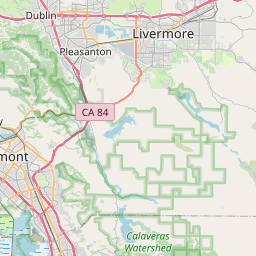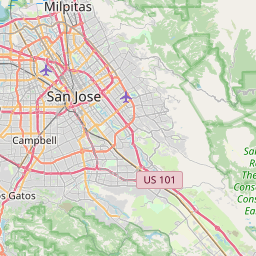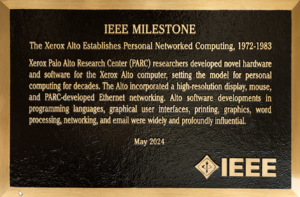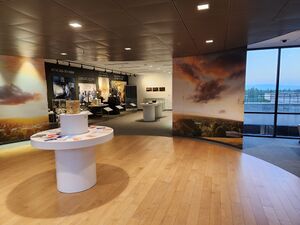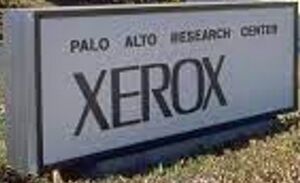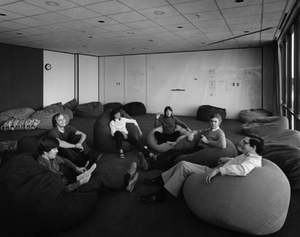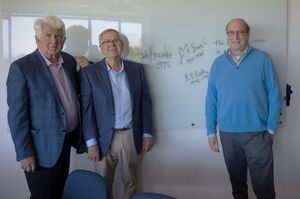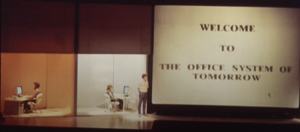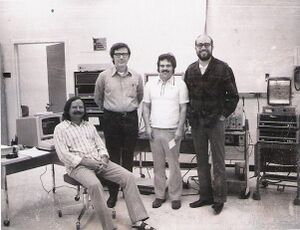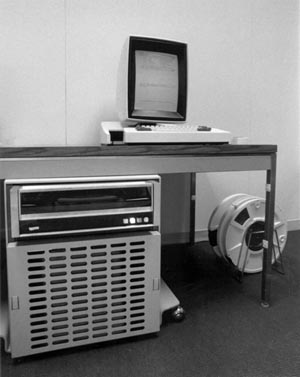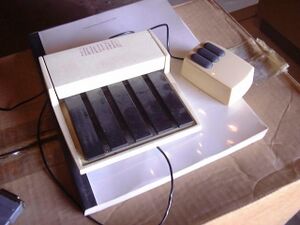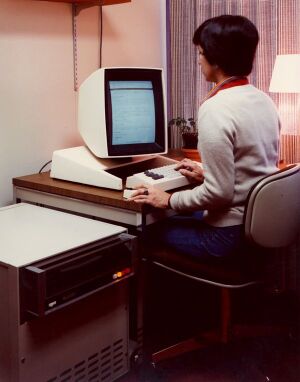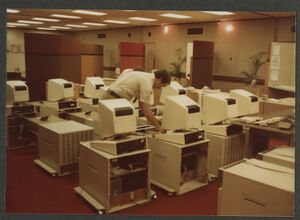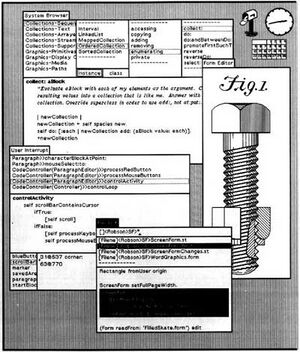Milestones:The Xerox Alto Establishes Personal Networked Computing, 1972-1983
- Date Dedicated
- 2024/05/17
- Dedication #
- 251
- Location
- Palo Alto, CA
- IEEE Regions
- 6
- IEEE sections
- Santa Clara Valley
- Achievement date range
- 1972-1983

Title
The Xerox Alto Establishes Personal Networked Computing, 1972-1983
Citation
Xerox Palo Alto Research Center (PARC) researchers developed novel hardware and software for the Xerox Alto computer, setting the model for personal computing for decades. The Alto incorporated a high-resolution display, mouse, and PARC-developed Ethernet networking. Alto software developments in programming languages, graphical user interfaces, printing, graphics, word processing, networking, and email were widely and profoundly influential.
Street address(es) and GPS coordinates of the Milestone Plaque Sites
- Site 1: PARC (part of SRI International), 3333 Coyote Hill Road, Palo Alto, CA 94304 US (37.402370, -122.148354)
- Site 2: Computer History Museum, 1401 N. Shoreline Blvd, Mountain View, CA 94043 US (37.414757, -122.077679)
Details of the physical location of the plaque
- Site 1: On the back wall of The Innovation Museum, which is to the left of the front reception desk, and alongside 2 other IEEE Milestone plaques (Laser Printer and Ethernet)
- Site 2: On the inside face of the front patio brick wall, near the museum's Main Entrance
How the plaque site is protected/secured
- Site 1: Building security; 8am-4:30pm access on weekdays
- Site 2: Building security; 24/7 access
Historical significance of the work
The concepts included in or pioneered by the Alto hardware and software would dramatically change the personal computing future when they were subsequently incorporated by such companies as Apple (Lisa and Macintosh), Microsoft (Word, Windows), Adobe (Postscript), 3Com (Ethernet), and IBM (Personal Computer). There were many hardware and software innovations that would shape the future of personal computing.
Obstacles (technical, political, geographic) that needed to be overcome
Before the development of the Alto, the computer market was dominated by costly mainframe and minicomputers with dumb, character based terminals that time-shared the processing time of the computer. The lack of showing different fonts and type styles along with no drawing capability on the normal computer terminal meant creating documents was very difficult. Also, the lack of effective high speed networking among different mainframe computers meant collaboration between people in different facilities was very difficult.
Features that set this work apart from similar achievements
There were both hardware and software features that set this work apart. The Alto display was bit-mapped with 606x808 pixels that allowed multiple fonts and type styles such as italics rather than the typical terminal that had an 80 by 24 character-only display. Importantly, this bit-mapped display also allowed graphic images. In addition to a keyboard, a three-button mouse and an optional 5-key chorded keyboard were available to the user. The Alto incorporated user-accessible microcode that allowed the use of the same basic hardware for many different applications.
Many innovative software programs were available including the first “What You See Is What You Get” (WYSIWYG) document preparation systems: Bravo and Gypsy. Another innovation was the Laurel email tool, and its successor Hardy. The Sil vector graphics editor was used mainly for logic circuits, printed circuit boards, and other technical diagrams. The Markup bitmap editor was an early paint program, and the Draw graphical editor used lines and splines. Other software included the first WYSIWYG integrated circuit editor, the first versions of the Smalltalk object-oriented programming language environment, and one of the first network-based multi-person video games: Alto Trek.
The Alto also provided Ethernet connectivity which facilitated collaboration amongst the Alto users by allowing rapid transfer of information, and also allowed access to the PARC-invented laser printer. This combination of the user-friendly Alto, Ethernet, and laser printer was truly "The Office System Of Tomorrow." It was a dramatic improvement over a terminal with a command line-interface connected to a mainframe, trying to transfer data to a different mainframe, and use of a tractor-feed printer that could only print numbers, letters, and a limited set of special characters.
Significant references
"Alto: A Personal Computer” Charles P. Thacker, et al. Xerox, Palo Alto Research Center, 1979.
“Dealers of Lightning: Xerox PARC and the Dawn of the Computer Age”. Michael A. Hiltzik, (1999) HarperCollins ISBN 0-88730-891-0. This book provides a timeline and description of the activities that took place at Xerox PARC during the development of the Alto. It details the efforts of Charles Thacker and the other people involved with the creation of the Alto and the importance of the concepts contained in the Alto hardware and software.
“Alto A Personal Computer Hardware Manual” August 1976, A description of the hardware and the standard microcode.
“This document is a description of the Alto, a small personal computing system originally designed at PARCo By 'personal computer' we mean a non-shared system containing sufficient processing power, storage, and input-output capability to satisfy the computational needs of a single user.”
“The Alto and Ethernet Software” by Butler Lampson 1986 Description of the Alto Ethernet software published in the Association for Computing Machinery journal.
“The personal distributed computing system based on the Alto and the Ethernet was a major effort to make computers help people to think and communicate. The paper describes the complex and diverse collection of software that was built to pursue this goal, ranging from operating systems, programming environments, and communications software to printing and file servers, user interfaces, and applications such as editors, illustrators, and mail systems.”
“The Alto and Ethernet Hardware” by Charles Thacker 1986 Description of the Alto Ethernet hardware published in the Association for Computing Machinery journal.
“Between 1972 and 1980, the first distributed personal computing system was built at the Xerox Palo Alto Research Center. The system was composed of a number of Alto workstations connected by an Ethernet local network. It also included servers that provided centralized facilities. This paper describes the development of the hardware that was the basis of the system.”
“The Xerox Alto Computer”, Thomas A. Wadlow, Page 58, Byte Magazine, September 1981. This article confirms the Alto as the beginning of the personal computer as an important tool for research. “In 1972, Xerox Corporation decided to produce a personal computer for research. The result was the Alto computer, whose name comes from the Xerox Palo Alto Research Center where it was developed. The Alto was the result of a joint effort by Ed McCreight, Chuck Thacker, Butler Lampson, Bob Sproull, and Dave Boggs, who were attempting to make a device that was small enough to fit in an office comfortably, but powerful enough to support a reliable, high quality operating system and graphics display. Their goal was to provide each user with a personal computing facility capable of meeting all individual needs and a communications facility that would allow users to share information easily. In 1978 Xerox donated a total of fifty Altos to Stanford, Carnegie-Mellon, and MIT (Massachusetts Institute of Technology). These machines were quickly assimilated into the research community and rapidly became the standard against which other personal computers were judged.”
“The Alto and Ethernet System Xerox PARC in the 1970’s”, Butler Lampson, Microsoft Research, October 17, 2006
“Troublemakers Silicon Valley’s Coming of Age” Leslie Berlin, 2017 Simon & Shuster pages 101-106, 221-224 ISBN 978-1-4516-5150-8. In this book Leslie Berlin tells the story of the Alto and the men who produced it. One of the items to note is the following excerpt: “The flagship software program on the Alto was a word processing program called Bravo. (Its writer, Charles Simonyi, would later move to Microsoft, where Bravo became the design influence for Microsoft Word.)
Supporting materials
Alto: A Personal Computer. Charles P. Thacker, et al. Xerox, Palo Alto Research Center, 1979. http://bitsavers.org/pdf/xerox/parc/techReports/CSL-79-11_Alto_A_Personal_Computer.pdf
Dealers of Lightning: Xerox PARC and the Dawn of the Computer Age. Michael A. Hiltzik, (1999) HarperCollins ISBN 0-88730-891-0. This book provides a timeline and description of the activities that took place at Xerox PARC during the development of the Alto. It details the efforts of Charles Thacker and the other people involved with the creation of the Alto and the importance of the concepts contained in the Alto hardware and software. https://books.google.com/books?id=lzgOduibRJgC&lpg=PP1&pg=PP1#v=onepage&q&f=false
Alto: A Personal Computer Hardware Manual. August 1976, A description of the hardware and the standard microcode. “This document is a description of the Alto, a small personal computing system originally designed at PARC. By 'personal computer' we mean a non-shared system containing sufficient processing power, storage, and input-output capability to satisfy the computational needs of a single user.” http://bitsavers.informatik.uni-stuttgart.de/pdf/xerox/alto/Alto_Hardware_Manual_Aug76.pdf
“The Alto and Ethernet Software.” Butler Lampson, 1986. Description of the Alto Ethernet software published in the Association for Computing Machinery journal. “The personal distributed computing system based on the Alto and the Ethernet was a major effort to make computers help people to think and communicate. The paper describes the complex and diverse collection of software that was built to pursue this goal, ranging from operating systems, programming environments, and communications software to printing and file servers, user interfaces, and applications such as editors, illustrators, and mail systems.” http://www.bwlampson.site/38-AltoSoftware/WebPage.html
“The Alto and Ethernet Hardware.” Charles Thacker, 1986. Description of the Alto Ethernet hardware published in the Association for Computing Machinery journal. “Between 1972 and 1980, the first distributed personal computing system was built at the Xerox Palo Alto Research Center. The system was composed of a number of Alto workstations connected by an Ethernet local network. It also included servers that provided centralized facilities. This paper describes the development of the hardware that was the basis of the system.” https://courses.cs.washington.edu/courses/csep590/06au/readings/Thacker.Alto.Hardware.pdf
“The Xerox Alto Computer,” Thomas A. Wadlow, Page 58, Byte Magazine, September 1981. This article confirms the Alto as the beginning of the personal computer as an important tool for research. “In 1972, Xerox Corporation decided to produce a personal computer for research. The result was the Alto computer, whose name comes from the Xerox Palo Alto Research Center where it was developed. The Alto was the result of a joint effort by Ed McCreight, Chuck Thacker, Butler Lampson, Bob Sproull, and Dave Boggs, who were attempting to make a device that was small enough to fit in an office comfortably, but powerful enough to support a reliable, high quality operating system and graphics display. Their goal was to provide each user with a personal computing facility capable of meeting all individual needs and a communications facility that would allow users to share information easily. In 1978 Xerox donated a total of fifty Altos to Stanford, Carnegie-Mellon, and MIT (Massachusetts Institute of Technology). These machines were quickly assimilated into the research community and rapidly became the standard against which other personal computers were judged.” https://archive.org/details/byte-magazine-1981-09/page/n59
“The Alto and Ethernet System Xerox PARC in the 1970’s,” Butler Lampson, Microsoft Research, October 17, 2006. http://www.bwlampson.site/Slides/AltoAtPARCIn1970s.pdf
Troublemakers: Silicon Valley’s Coming of Age. Leslie Berlin, 2017, Simon & Shuster, pages 101-106, 221-224 ISBN 978-1-4516-5150-8. In this book Leslie Berlin tells the story of the Alto and the men who produced it. One of the items to note is the following excerpt: “The flagship software program on the Alto was a word processing program called Bravo. (Its writer, Charles Simonyi, would later move to Microsoft, where Bravo became the design influence for Microsoft Word.)” https://www.amazon.com/Troublemakers-Silicon-Valleys-Coming-Age-ebook/dp/B06ZZ1YDTX#reader_B06ZZ1YDTX
Supporting materials (supported formats: GIF, JPEG, PNG, PDF, DOC): All supporting materials must be in English, or if not in English, accompanied by an English translation. You must supply the texts or excerpts themselves, not just the references. For documents that are copyright-encumbered, or which you do not have rights to post, email the documents themselves to ieee-history@ieee.org. Please see the Milestone Program Guidelines for more information.
“Yesterday’s Computer of Tomorrow: The Xerox Alto.” Computer History Museum event. November 2017. https://www.youtube.com/watch?v=4m_GhapEBLQ
Xerox Alto Source Code https://www.computerhistory.org/atchm/xerox-alto-source-code/
1972 commercial for the Xerox Alto. https://www.youtube.com/watch?v=tjvSWCQVpJ0
Video ethnography of ICARUS on Xerox Alto. https://www.youtube.com/watch?v=BauuOoB6EIU&t=5s
Video ethnography of GYPSY on Xerox Alto. https://www.youtube.com/watch?v=Dhmz68CII9Y
Video ethnography of SMALLTALK on Xerox Alto. https://www.youtube.com/watch?v=uknEhXyZgsg&t=2844s
Alto Operating System Reference Manual. Description of the Alto operating system compiled in 1980 at PARC. http://bitsavers.org/pdf/xerox/alto/memos_1975/Alto_Operating_System_Reference_Manual_Jun75.pdf
Bravo Manual. Bravo was the first What You See Is What You Get” (WYSIWYG) word processing program. http://www.bitsavers.org/pdf/xerox/alto/BravoXMan.pdf
Gypsy Operators Handbook. Document publishing program for the Alto. http://www.bitsavers.org/pdf/xerox/alto/gypsy/Gypsy_Operators_Handbook_May1978.pdf
Markup Users Manual. Markup is an Alto program for document illustration. Its basic purpose is to permit you to add illustrations to an existing formatted text document. http://bitsavers.trailing-edge.com/pdf/xerox/alto/Alto_Users_Handbook_Sep79.pdf
Alto Users Handbook. September 1979. Provides instructions for non-programmers on the use of the Alto. http://bitsavers.trailing-edge.com/pdf/xerox/alto/Alto_Users_Handbook_Sep79.pdf
Xerox Inter-Office Memorandum from Butler Lampson, “Why Alto?” December 12, 1972. In this document, Butler provides this statement about the performance of the Alto: “The system is capable of doing almost any computation which a PDP-10 can do. For most problems it can deliver better performance to the user than a time-shared 10, even if the latter is lightly loaded.” http://www.bwlampson.site/38a-WhyAlto/Acrobat.pdf
IEEE Spectrum Stories about Xerox PARC Milestone Inventions
- Xerox Parc’s Engineers on How They Invented the Future: And how Xerox lost it (October 1985)
- How the Graphical User Interface was Invented: Three decades of UI research came together in the mice, windows, and icons used today (September 1989)
- Draper Prize Awarded to Pioneers of the Networked PC: Former Xerox PARC team to share US $500 000 (February 2004)
- Of Modes and Men: Cut-and-paste, the one-button mouse, WYSIWIG desktop publishing—these are just a few of the user interface innovations pioneered by Larry Tesler (August 2005)
- Playing Woodward and Bernstein At Xerox Parc: Xerox Parc celebrates 40 years, while I look back on a little history of my own (September 2010)
- The Improbable Origins of PowerPoint: Here’s the surprising story behind the software that conquered the world, one slide at a time (October 2017)
- The Xerox Alto Struts Its Stuff on Its 40th Birthday: A live demonstration of a restored Xerox Alto shows how much it still influences computers today—and the lessons it has left to share (November 2017)
- Behind the Scenes at Xerox Parc’s Futures Day—40 Years Ago: Pulling off Xerox Parc's historical day of demos involved a borrowed airport refrigeration truck and an ax (December 2017)
- Early Soyuz Spacecraft Had a Peculiar User Interface, Says Charles Simonyi: The legendary developer went to space twice, and couldn’t help but notice the capsule’s quirky virtual interface (June 2019)
- Larry Tesler, the Computer Scientist Who Revolutionized the User Interface, Dies at 74: When you cut, copy, or paste today, take a moment to thank Larry Tesler (February 2020)
- Q&A: Adele Goldberg on the Legacy of Smalltalk - One of the language’s original developers talks about its influence on modern-day programming (August 2022)
- The Lisa Was Apple’s Best Failure: Its GUI, mouse, and software greatly influenced the Macintosh (January 2023) (credits the Alto GUI)
- 50 Years Later, We’re Still Living in the Xerox Alto’s World: The Alto transformed computing. And the changes stuck (March 2023)
- Smalltalk Blew Steve Jobs’s Mind: Its graphical user interface inspired change at Apple’s core (March 2023)
- Xerox Donates Legendary PARC Research Center: The lab that pioneered personal computing will become part of SRI International (May 2023)
- Honoring the Legacy of Chip Design Innovator Lynn Conway: The IEEE Fellow was a noted transgender-rights activist (June 2024)
- Ethernet is Still Going Strong After 50 Years: The technology has become the standard LAN worldwide (November 2023)
Dedication Ceremony
A Celebration of 50 Years of the Internet
- Blog with Photos from "50 Years of the Internet" Event
- Eileen Clegg's Internet Evolution Tapestry as discussed by her and Vint Cerf
Martin Wasserman Interviews re: the 50th Anniversary of the Internet
- Internet Pioneer Vint Cerf
- Internet Historian Marc Weber
- IEEE History Committee Vice Chair Brian Berg
SRI Story About This Recognition
Map

